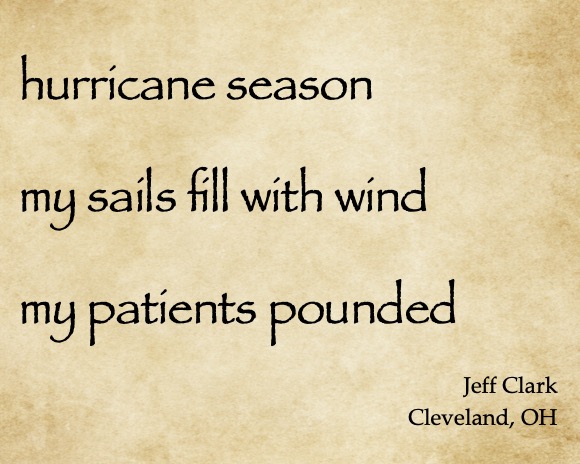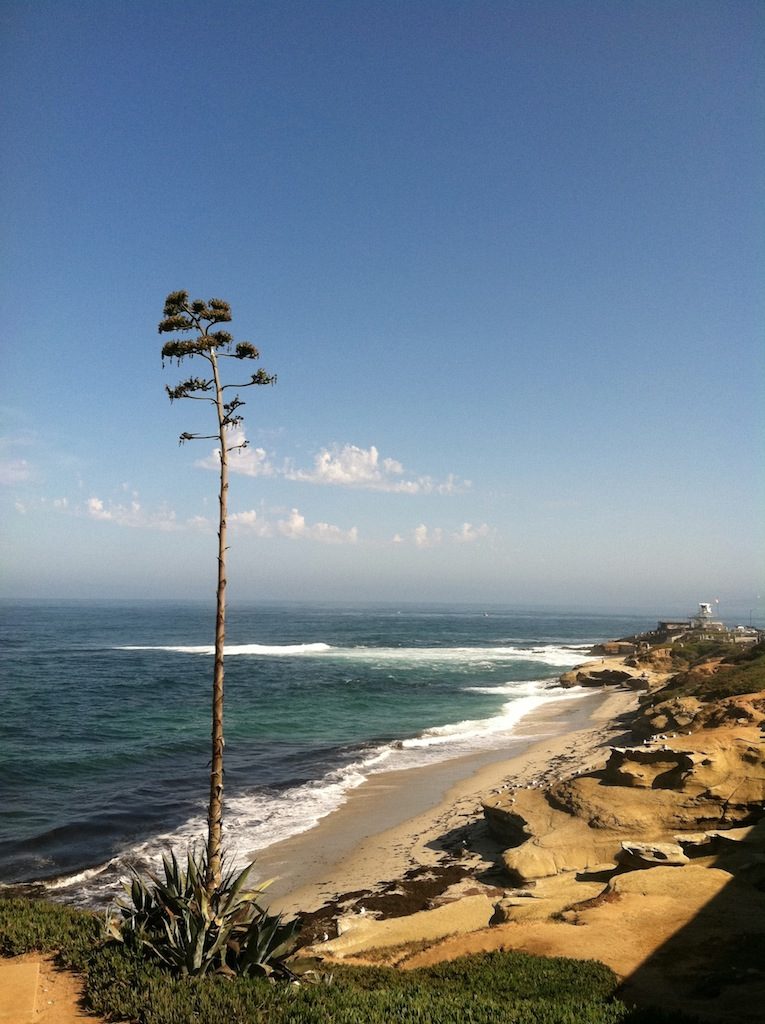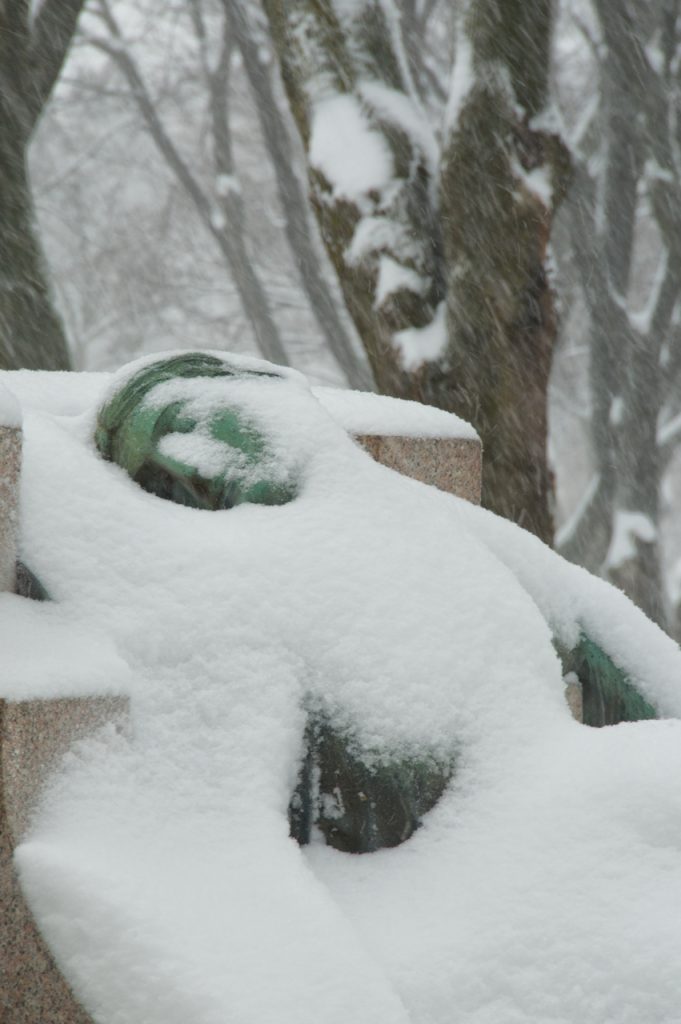Tears Should Be Surprising
Wynne Morrison
Tears should be surprising.
He is, after all, well over six feet tall,
must top 250 pounds,
always quick and confident
with a joke upon his lips.
Most of his patients weigh a pound or two.
Eyes fused shut, translucent skin,
with lives of needles, tubes,
machines and probing hands.
On this week there are too many
who will never have a chance.
Chocolate, silence, and he hauls
himself up from the office couch.
“At least I can still cry,” he says
and turns back up the stairs to work.
Tears Should Be Surprising Read More »
Lone Tree
Mary T. Shannon
About the artist:
I am a psychotherapist who specializes in using story and art as adjunctive treatment tools. Having used both of these tools in my own healing process, I am better able to guide others in doing the same. Additional visual art, as well as essays and academic journal articles on narrative medicine can be found on www.marytshannon.com.
About the artwork:
My husband and I solemnly walked by this scene the day before his surgery, silently holding hands. The surgery was risky, and we both knew he might not survive. I wondered if I would soon be like this tree, standing alone, and how I would survive on my own. A month later we walked by the tree again, silently holding hands. Only this time we were smiling.
Visuals editor:
Justin Sanders
Imagine
Linda Koebner
“Her vitals are fine,” the nurse told Besarta’s mother during a rare visit to the family’s basement apartment in the Bronx.
Besarta’s mind is also fine–sharp and clear. She asked me to use her real name in this story.
Her twenty-five-year-old face is beautiful and flawless, despite the howls of frustration, rage and pain she directs at her family, at fate and especially at Friedreich’s ataxia, the disease that controls her.
When I come for our weekly visit, Besarta’s blue-green eyes smile at me from where she sits in her wheelchair. Then her head suddenly wobbles sideways. Her face smashes against the chair’s headrest–first the right side, then the left.
After the Flood: Remembering Sandy
Lois Isaksen
Oct. 29, 2012
We’d just received word: within hours, Hurricane Sandy would hit New York City. As an emergency-medicine resident at NYU/Bellevue Hospital Center, I was working as fast as I could–examining patients, suturing wounds, setting bones, running families to the hospital pharmacy before it closed.
The lights flickered once, but I did not take it as the omen it was.
After the Flood: Remembering Sandy Read More »
Tlingit Aspirin
Elaine Whitman
About the artist:
Elaine has been taking photographs since she was nine years old when her father, an internist and talented amateur photographer, gave her a Brownie box camera. She has worked her way through many cameras since that time and now relies on a pocket-sized Canon “point-and-shoot” and a Nikon D7000. (This image was taken with the Nikon.) In addition to her passion for photography, Elaine is also a music volunteer for hospice, where she plays her Native American flute for patients and their families.
About the artwork:
“On the eighth anniversary of my diagnosis of stage IIb breast cancer, and on our thirty-fifth wedding anniversary, my husband Neal and I celebrated my remission and our marriage with a cruise up Alaska’s Inside Passage. In Juneau, hiking on the Trail of Time, our guide pointed out devil’s club, whose leaves can grow as large as dinner plates. Devil’s club is used medicinally and ceremonially by the Tlingit people of southeast Alaska, who refer to it as ‘Tlingit aspirin’.”
Visuals editor:
Justin Sanders
Luca
Richard Weiss
He waited, sandwiched between an angular
housewife with a cough and an accountant
whose clothing draped his skeletal frame.
When we first met he was much younger,
bearded, heavily tattooed, dressed in black,
his bulk dwarfing my consultation room,
a school custodian recovering after a painful
divorce from a guitar-playing, nose-pierced wife
Aeterna
Bernard Lapointe
About the artist:
Bernard Lapointe is a palliative-care physician in Montreal. “After a few years as a family physician, at the dawn of the AIDS epidemic in Montreal, I found my practice very rapidly transforming from a downtown STD practice to palliative care. I still remember, vividly, those years: the pain, the dynamic communities rising to the challenge, the creativity of the various artists fueling the fight. The slogan was ‘Silence = Death,’ and our voices did not allow for silence. Caring for the terminally ill year after year carries its price. The urge to live fully today, to expand beyond my limitations and shortsightedness, has allowed me to outgrow the sorrow. This is why my camera and photography became so important in my life, allowing me to transcend the harsh reality of illness by first reconnecting with life, through wildlife and garden photography.”
About the artwork:
” ‘Aeterna’ is from a series titled Elysion, shot in the cemeteries of Mont-Royal during a couple of good snowstorms.
Checking Boxes
Regina Harrell
I am a primary-care doctor who makes house calls in and around Tuscaloosa, Alabama. Most of my visits are in neighborhoods, but today my rounds start at a house located down a dirt road a few miles outside of town.
Gingerly, I cross the front walk; Mrs. Edgars told me that she killed a rattlesnake in her flowerbed last year.
She is at the door, expecting my visit. Mr. Edgars sits on the couch, unable to recall that I am his doctor, or even that I am a doctor, but happy to see me nonetheless.
A Different Kind of Miracle
Anita Fry
Once upon a time, I was a newspaper journalist: I chased down sources and sweated over deadlines. Then, in mid-career, I switched to doing marketing and communications for a regional healthcare system. This consisted of a large hospital and many outpatient clinics, including a community cancer center.
Because I handled communications work for the cancer center, I also had a seat on the Cancer Committee–an oversight group of oncologists, pathologists, nurses and other specialists, who met quarterly.
I found these gatherings a bit intimidating. My fellow members were welcoming, but they spoke almost entirely in acronyms and medical jargon–“OCNs,” “PET/CTs,” “staging,” “linear accelerators.”
A Different Kind of Miracle Read More »






